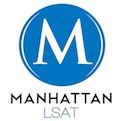An old question Wrote:So the kids UNANIMOUSLY voted based off of what the teacher said. I understand this, and I was tempted to select the right answer but the inclusion of the word "some" threw me off.
Why is (d) correct if it says only some of the students were affected? Wouldn't it have been more correct to say 'most' or 'all'?
Am I to assume that some chose the pieces regardless of what the teacher said and some others based their decision off of what they'd been told? Doesn't that go against the point of the stimulus, saying that they unanimously voted based on what they'd been told?
I think you're right to be suspicious of (D), but I actually hesitated because it was too strong in my opinion. But, when I moved on to (E) and saw that it was just as bad as (A)-(C), (D) became the clear winner.
It's actually possible that the two classes were not affected by what the teacher said, and it's simply that the first class is impatient, and always chooses the first thing, and the second one has a short attention span and so forgot about the first one. Obviously, this is an exaggeration, but without knowing that all other conditions were the same, including the nature of the students, we can't say for sure. Perhaps the most obvious explanation (though it's come to me last!) is that the painting that was shown in the museum was simply much better. So, (D) is the MOST STRONGLY supported, but it is not something we can infer 100%. It's more of a 95% sort of thing.
Common sense would lead us to believe that the kids were swayed by the history of the paintings, but we would be on thin ice to say ALL the students were affected by that. Just one kid feeling otherwise would throw this off. When you have to choose between two answer choices for an inference question, choose the safer, more provable one. This is great practice, I imagine, for fact pattern work in law school.
As for the incorrect answer choices:
(A) is too extreme! Any piece of work? What about if their mom made it?
(B) is unsupported. We don't have any information about that.
(C) is unsupported. Perhaps a really grotesque painting in a museum would not pass muster.
(E) is unsupported. Perhaps one painting was simply much better (from the kids point of view).



